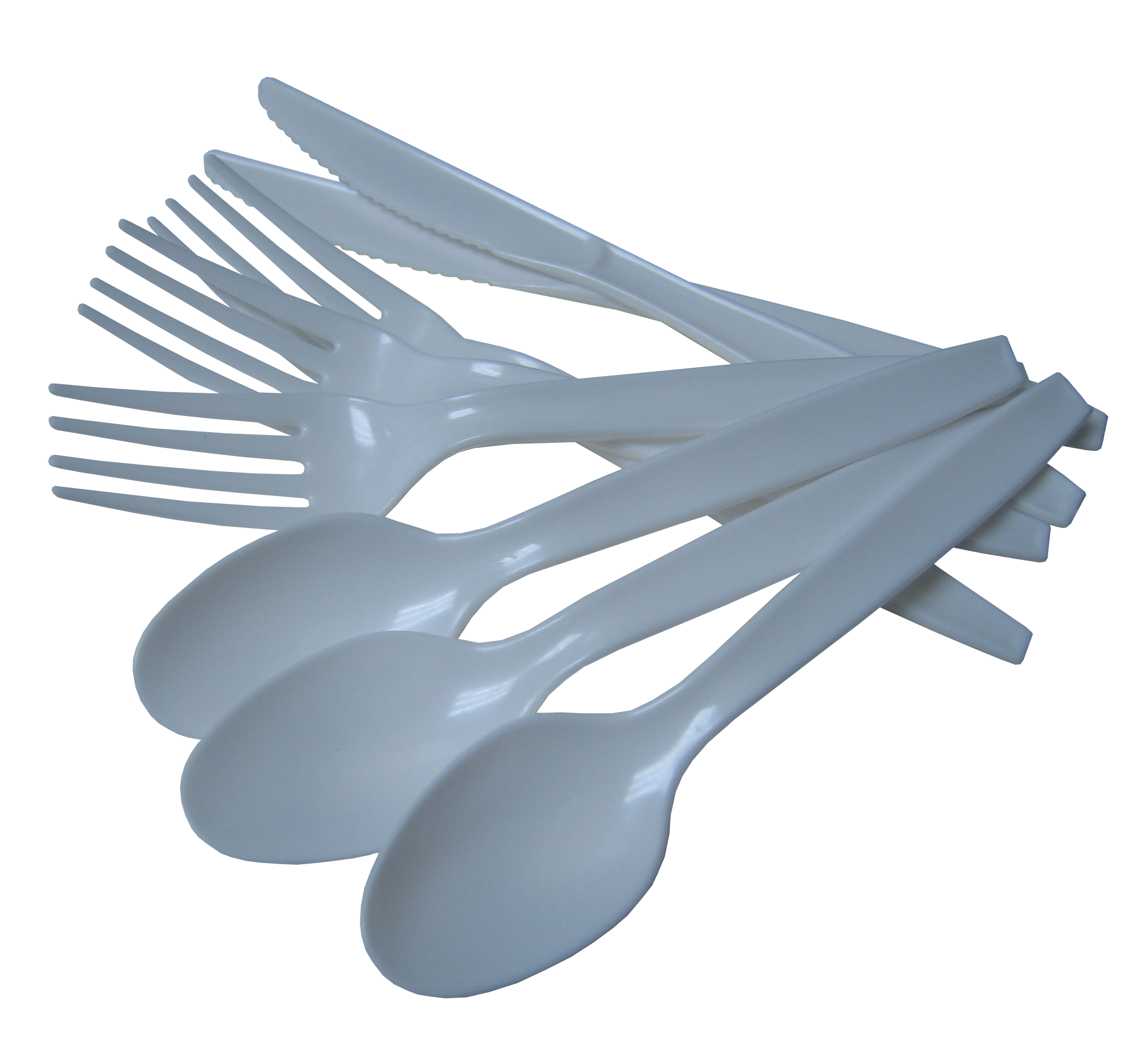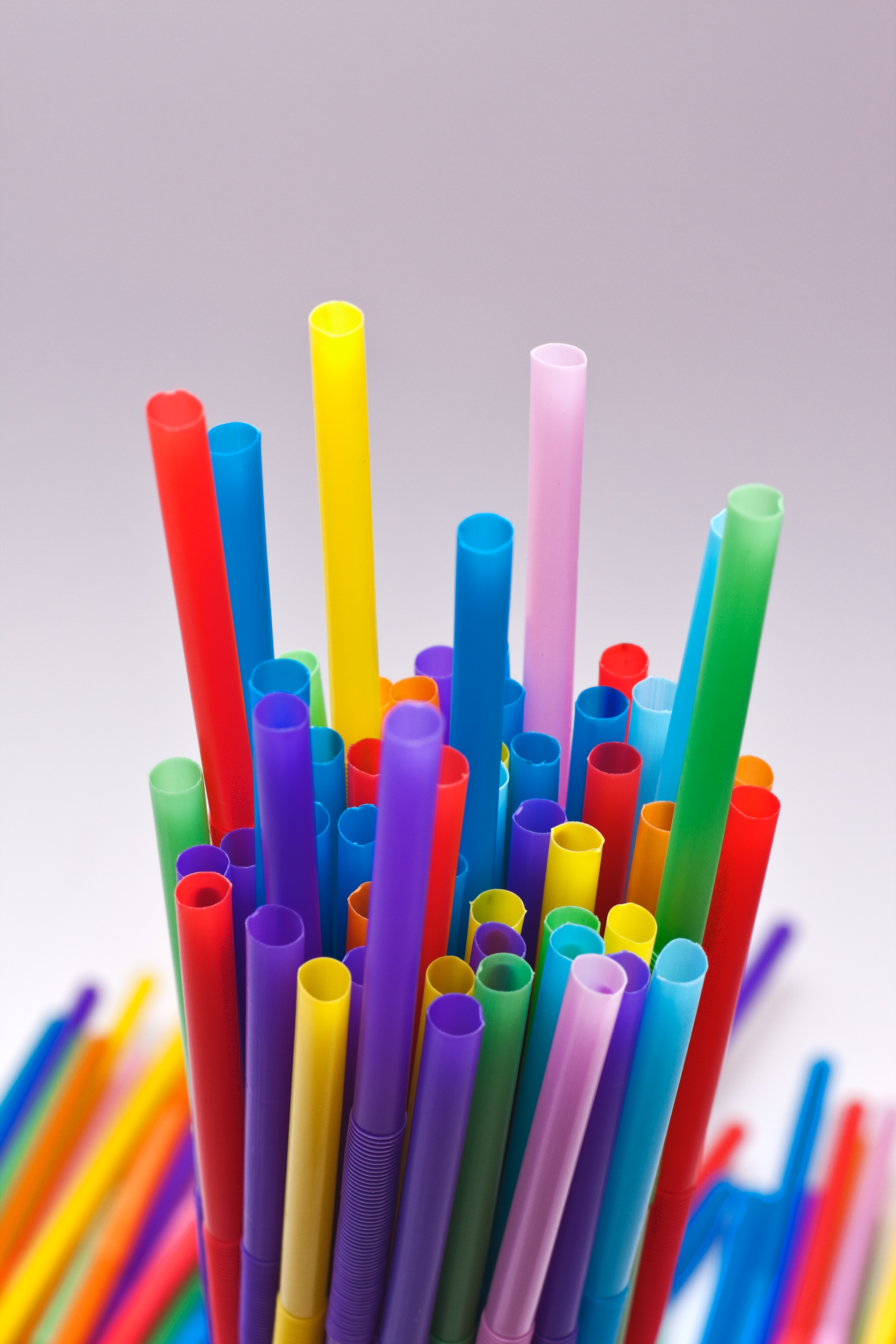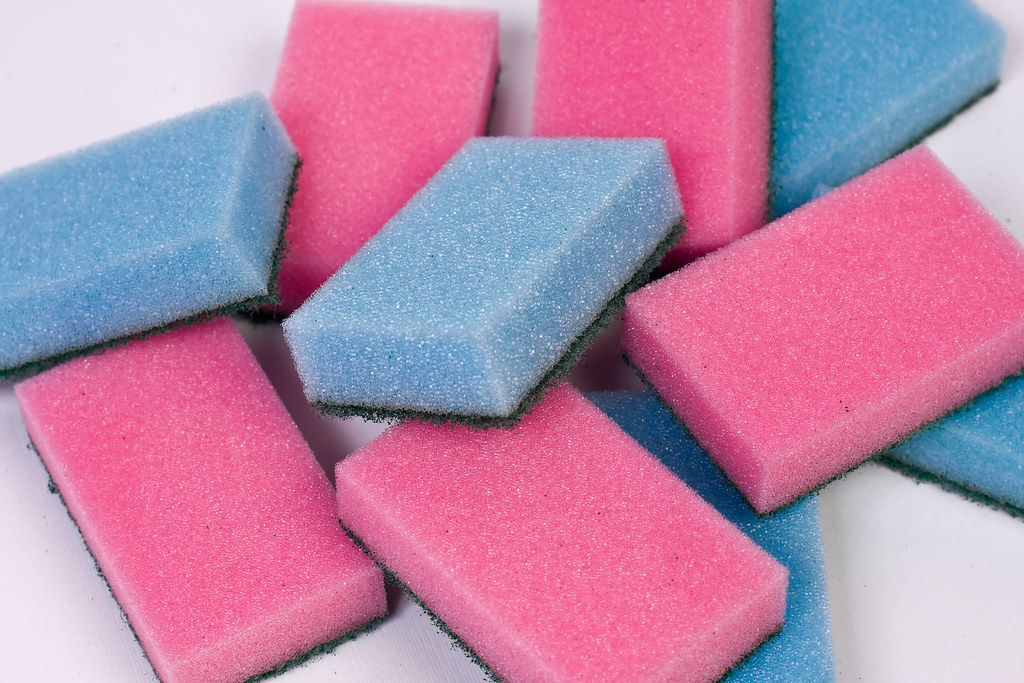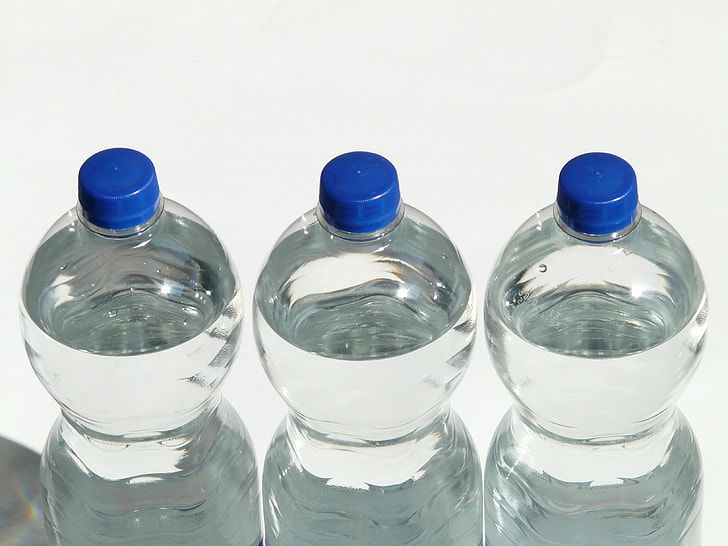
Microplastics are no longer just a distant environmental concern; they have become an intimate part of our daily lives, pervading the water we drink, the air we breathe, and even the food that nourishes us. These tiny fragments of plastic, often invisible to the naked eye, pose a significant and growing threat to human health, silently accumulating within our bodies over time. Recent research, including a notable February 2025 study, suggests that these microscopic invaders don’t merely pass through; they actively build up in our tissues, with some studies detecting higher concentrations in vital organs. This accumulation raises serious alarms about potential long-term health consequences, including a possible link to conditions like dementia. Understanding their pervasive nature and how they infiltrate our homes is the crucial first step toward protecting our well-being.
The pervasive nature of microplastics means that complete avoidance is nearly impossible, with an estimated 22 million micro and nanoplastics inhaled by humans each year. Our exposure pathways are multifaceted, occurring through inhalation, ingestion, or even touch. The scientific community is increasingly concerned about their potential health effects, moving beyond their role as environmental pollutants to investigate their direct impact on the human body. Studies have begun to shed light on these impacts, revealing troubling connections between microplastics and a range of adverse health outcomes.
Indeed, the presence of microplastics and even smaller nanoplastics in blood vessels has been linked to increased risks of severe cardiovascular events such as heart attack and stroke, and in the most extreme cases, even death. Beyond cardiovascular health, researchers have observed tissue inflammation, cell death, and detrimental impacts on lung and liver function. Alarmingly, in animal and marine life, these particles have been associated with oxidative stress, DNA damage, and the development of cancer, with studies on mice showing reduced sperm count, ovarian scarring, and hereditary metabolic disorders. While much remains unknown about the exact long-term effects on humans, the initial findings are sobering, compelling many individuals to re-evaluate their household practices and the products they use, particularly within the kitchen—a primary gateway for these unwelcome guests into our food and bodies.

1. **Nonstick Cookware**
The convenience of nonstick cookware, with its effortless food release, has made it a kitchen staple for many households. However, mounting evidence suggests that the very coatings providing this benefit are a significant source of microplastic contamination. These coatings are not inert; they degrade over time, especially when exposed to the high cooking temperatures commonly used, releasing microscopic plastic particles directly into our meals. This process heightens an individual’s exposure to potentially harmful pollutants with every dish prepared.
A new study has brought this concern into sharper focus, revealing that plastic and nonstick cookware actively release microplastics into food during the cooking process. Australian researchers have provided startling estimates, suggesting that Teflon-coated cookware alone may contain thousands, or even millions, of microplastic particles. This vast reservoir of plastic serves as a constant source of potential contamination. Moreover, a simple crack or fracture in your nonstick pan could mean exposure to over two million microplastic particles, highlighting the inherent vulnerability of these materials to wear and tear.
The continuous ingestion of microplastics from daily cooking with compromised nonstick surfaces contributes significantly to the body’s overall microplastic burden. The known health risks associated with microplastics are a serious concern, encompassing issues such as tissue inflammation, cell death, and detrimental impacts on vital organs. The cumulative effect of these tiny plastic particles, accumulating silently over time, raises serious questions about their long-term impact on human well-being and demands careful consideration.
For home chefs, these revelations about nonstick cookware serve as a significant call to action. Reconsidering the materials used for frying, sautéing, and baking becomes paramount for reducing daily exposure. The convenience offered by nonstick surfaces must be weighed against the potential health implications, encouraging a conscious shift towards safer alternatives that do not pose the risk of shedding plastic particles into our culinary creations. Making informed choices in the kitchen is an essential step towards safeguarding health.
Product on Amazon: CAROTE Nonstick Pots and Pans, Induction Cookware Set 16pcs Kitchen Cooking Sets, Pot and Pan Non Stick w/Frying pan (PFOS, PFOA Free)
Brand: CAROTE
Binding: Kitchen Product Group: Kitchen
Price: 139.99 USD
Rating: 4.6 Total reviews: 1252
Material: Aluminum, Titanium
Color: Black
Size: 16 PCS
Handle Material: Bakelite
Features:
1. The titanium nonstick coating enhances durability and performance, ensuring easy food release and effortless cleanup, while its smooth, the surface helps resist stains and odor buildup for a cleaner cooking experience.
2. Crafted from reinforced die-cast aluminum, this set is designed for durability, withstanding frequent use without compromising performance.
3. Experience even and rapid heat distribution with no hot spots, ensuring consistent cooking for boiling, simmering, and reheating.
4. This set features high-quality silicone lids for an excellent seal, locking in flavor and enhancing heat retention.
5. Carote provides 12 months warranty from the date of purchase. Please don’t hesitate to reach out if any quality problem. You will be guaranteed to get satisfying solution.
Shopping on Amazon >>
Read more about: Unwrapping the Truth: 68 ‘Forever Chemicals’ Found in Food Packaging

2. **Plastic Food Containers**
Plastic food containers have become ubiquitous in our modern, fast-paced lives, serving as convenient vessels for storing leftovers, packing lunches, and increasingly, delivering meals from restaurants. Yet, this widespread convenience comes at a potentially significant cost to our health, as these seemingly innocuous containers are a documented source of microplastic contamination. The very acts of heating or washing these containers can facilitate the transfer of microscopic plastic particles into the food they hold, turning a simple meal into an unexpected source of plastic ingestion.
The proliferation of home delivery services has further integrated plastic containers into our daily routines, making them more prevalent than ever before. Many of us routinely receive our takeout meals in plastic, and while the food itself might be meticulously prepared, the container it comes in could inadvertently be introducing microplastics into our diet. A specific study found that all reusable plastic takeout containers typically used by restaurants contained microplastics, indicating that even those intended for repeated use are prone to shedding these particles.
The mechanism of this transfer is primarily linked to temperature and physical stress. When plastic containers are heated, whether in a microwave or by placing hot food inside them, the plastic structure can become more unstable, which significantly increases the likelihood of microplastic release. Similarly, the abrasive action of washing, especially in a dishwasher, can cause wear and tear on the plastic, leading to the shedding of tiny plastic fragments. These detached particles can then easily mix with your food and subsequently be ingested.
The routine use of plastic containers for food storage and consumption therefore represents a clear and consistent pathway for these particles to enter our system, contributing directly to the body’s overall microplastic burden. As research indicates that microplastics can accumulate in tissues and vital organs, the long-term implications for health are a considerable concern. Opting for alternative materials for food storage, particularly for reheating or for items that will be in contact with the plastic for extended periods, is a crucial step in mitigating exposure to these potentially harmful pollutants.
Product on Amazon: Dipoo 60 Sets (120-Piece) Deli Containers with Lids, 32/16/8 oz X 20 Set Each, Leak-Proof & BPA Free Airtight Takeout Plastic Food Storage Containers for Soup, Freezer/Microwave/Dishwasher Safe
Brand: Dipoo
Binding: Product Group: Kitchen
Price: 21.99 USD
Rating: 4.7 Total reviews: 508
Color: Clear
Material: Plastic
Material Feature: BPA Free, Dishwasher Safe, Food Grade, Freezer Safe, Microwave Safe
Capacity: 16 ounces, 2 Pounds, 8 ounces
Features:
1. 【60 Complete Set】:The package includes 60 complete set deli containers with lids, featuring 20 sets x 32/16/8 oz each, They are the perfect choice for your daily food storage and meal preparation.
2. 【Premium Quality】:Made from premium food – grade polystyrene, these BPA-free food storage containers with lids ensures your food remains safe and uncontaminated.
3. 【Leak – Proof】: Equipped with a tight – sealed lid design, these containers offer excellent leak – proof performance.
4. 【Freezer/Microwave/Dishwasher Safe】:These disposable food containers can withstand a temperature from -4℉ to 248℉ (cup only), suitable for the use in freezer, microwave and dishwasher ( top rack).
5. 【Multi – Purpose】:Ideal for storing soups, foods, fruits, snacks, and meal preps, these plastic containers are perfect for picnics, work lunches, takeout food, or storing leftovers.
Shopping on Amazon >>
Read more about: Honest Question: What Gives? 12 Once-Popular American Eats Nobody Touches Now

3. **Plastic Utensils**
Plastic utensils, encompassing everything from the disposable forks and spoons that accompany a grab-and-go meal to the spatulas and stirring spoons commonly used in home cooking, represent another pervasive source of microplastic exposure in our kitchens. Their lightweight nature and low cost have made them commonplace across various settings, yet studies consistently demonstrate that these seemingly harmless tools can leach microplastics into our food. This risk is particularly elevated when they are exposed to higher temperatures, meaning every stir, scoop, or bite could inadvertently deliver unwelcome plastic fragments along with your meal.
The primary concern with plastic utensils intensifies significantly during their interaction with hot foods. Heat acts as a powerful catalyst, promoting the breakdown of the plastic material and accelerating the release of microscopic plastic particles. Whether you’re stirring a hot soup, serving a freshly cooked pasta dish, or even simply eating a warm meal with a plastic fork, the potential for plastic particles to migrate into your food increases significantly. This direct contact during both preparation and consumption establishes an immediate pathway for microplastic ingestion.
Once these microplastics are released into your food and subsequently ingested, they don’t simply pass through the digestive system without consequence. Research indicates that these particles can settle into various parts of the body, including the bloodstream. The presence of microplastics and nanoplastics in the blood has been explicitly linked to severe health issues, such as an increased risk of heart attack, stroke, and in severe cases, even death, alongside observations of tissue inflammation and cellular damage in vital organs.
The pervasive presence of plastic utensils in diverse environments, from fast-food establishments to home kitchens, means that many individuals face regular and often unwitting exposure to this source of microplastics. This constant, incremental intake contributes directly to the cumulative burden of plastic particles within the body. Therefore, choosing alternatives to plastic utensils is a practical and impactful decision for those committed to minimizing their daily microplastic intake and safeguarding their long-term health from these ubiquitous pollutants.
Product on Amazon: Amazon Basics Disposable Clear Assorted Cutlery Set, Premium Quality, 192 Count, Large Combo Pack Forks, Spoon and Knives
Brand: Amazon Basics
Binding: Health and Beauty Product Group: Drugstore
Price: 8.98 USD
Rating: 4.8 Total reviews: 1660
Number of Pieces: 192
Material: Plastic
Color: Clear
Product Care Instructions: Single Use
Recommended Uses For Product: Daily
Special Feature: Disposable
Finish Type: Clear
Included Components: Fork, Knife, Spoon
Style: Transparent, Cut-Out
Features:
1. Premium quality clear plastic cutlery that stays strong through every meal.
2. Includes 64 place settings with a stylish cut-out design (64 forks, 64 spoons, 64 knives).
3. Made with transparent, strong, and durable material
4. Single-use cutlery for easy cleanup
5. Ideal for home cooked meals, barbecues, sandwich prep, and more
Shopping on Amazon >>
Read more about: You Won’t Believe How Gross These 14 Common Household Items Actually Are: Your Ultimate Germ Hotspot Guide!

4. **Tea Bags**
For many, a warm cup of tea is a comforting daily ritual, offering a moment of solace and relaxation. However, this seemingly innocent beverage may conceal a surprising source of microplastic contamination: the tea bag itself. It might come as a surprise to learn that numerous tea bags are not made solely from paper or natural fibers but often incorporate polypropylene, a type of plastic, as a key component in their manufacturing. This plastic content transforms your serene tea-brewing experience into a potential pathway for microplastic ingestion, often without the consumer’s immediate awareness.
The critical factor driving this contamination is the high temperature at which tea is typically brewed. When a plastic-containing tea bag is submerged in hot water, the extreme heat actively works to degrade the polypropylene fibers, prompting them to release their microscopic plastic components. Researchers at Spain’s Autonomous University of Barcelona conducted a study that revealed a staggering finding: billions of microplastic and nanoplastic particles can be released from a single tea bag for every millimeter of water it is submerged in, showcasing the immense scale of this problem.
This immense release of plastic fragments means that with every sip of your favorite brew, you could inadvertently be consuming billions of tiny plastic particles. The sheer scale of contamination from a single tea bag is profound, underscoring the extent to which plastic materials have infiltrated even the most unexpected aspects of our food and beverage preparation. This widespread, often hidden, integration of plastic into consumer products contributes significantly to the cumulative burden of microplastics within the human body.
The implications of regularly ingesting microplastics from tea bags align with broader health concerns about plastic particle accumulation in the body. As studies suggest that these micro- and nanoplastics can build up in tissues and organs, contributing to issues like inflammation, cell death, and potential long-term health risks, the daily habit of drinking tea from plastic-containing bags becomes a significant pathway for such accumulation. Consequently, being aware of the materials used in tea bags, and actively considering safer alternatives, is a vital step for health-conscious individuals to minimize this specific pathway of microplastic intake.
Product on Amazon: Twinings English Breakfast Black Tea Individually Wrapped Bags, 100 Count (Pack of 1), Smooth, Flavourful, and Robust, Caffeinated, Enjoy Hot or Iced, 100 Teabags
Brand: Twinings
Binding: Unknown Binding Product Group: Grocery
Price: 11.89 USD
Rating: 4.7 Total reviews: 103972
Item Form: Teabags
Flavor: English Breakfast
Tea Variety: Black
Unit Count: 100 Count
Features:
1. TWININGS MOST POPULAR TEA: English Breakfast, created by selecting some of the finest teas, each with their own unique characteristics for a well-balanced blend; Caffeinated, 100 Tea Bags
2. SMOOTH, FULL-BODIED TEA: A blend of teas from Kenya and Assam create a delightful cup of tea.
3. INDIVIDUALLY SEALED TEA BAGS STAY FRESH: Take your tea on the go in your purse, workout bag, backpack, school or work desk or car; Each tea bag is sealed for freshness so every cup of Twinings is the perfect cup of Twinings
4. DRINK IN LIFE: With a signature blend of tradition and innovation, Twinings encourages tea lovers to “Drink In Life” by taking small steps towards feeling good and living well, one sip at a time
5. SOURCED WITH CARE: Twinings aims to improve the lives of communities from which we source by improving access to water and sanitation, empowering women, and enhancing incomes and resilience.
Shopping on Amazon >>
Read more about: 15 Vehicles Owners Wish They’d Never Bought: Your Essential Guide to Avoiding Automotive Regrets

5. **Certain Spices (in plastic packaging)**Even the very ingredients we use to flavor and enhance our food can be a surprising conduit for microplastics, particularly certain spices housed in plastic containers. Depending on how it is packaged, that bottle of paprika, jar of oregano, or container of turmeric might secretly be full of microplastics. The prevalent use of plastic packaging for spices today presents a concerning pathway for food contamination, making our culinary endeavors a potential source of unwanted plastic particles in our daily diet.
Even the very ingredients we use to flavor and enhance our food can be a surprising conduit for microplastics, particularly certain spices housed in plastic containers. Depending on how it is packaged, that bottle of paprika, jar of oregano, or container of turmeric might secretly be full of microplastics. The prevalent use of plastic packaging for spices today presents a concerning pathway for food contamination, making our culinary endeavors a potential source of unwanted plastic particles in our daily diet.
A recent study has cast a spotlight on this issue, finding microplastics in all plastic containers tested, including those specifically used for spices. This research indicates that the plastic itself is not an inert barrier; instead, it can shed minute particles into its contents. Over time, and potentially influenced by factors such as temperature fluctuations during storage and transportation, these tiny plastic fragments can migrate from the packaging material directly into the spices, contaminating them before they ever reach your plate.
The phenomenon of food contamination by microplastics from packaging has reportedly seen an increase in recent decades, a trend that correlates directly with the pervasive rise in plastic use across the global food industry. As more and more products, including staple pantry items like spices, are housed in plastic, the opportunities for microplastic transfer into our food chain multiply, contributing to a stealthy but steady accumulation within our bodies through daily meals and culinary preparations.
When these contaminated spices are subsequently added to meals, the microplastics they carry are directly ingested by consumers. As previously highlighted, the human body is exposed to microplastics through ingestion, inhalation, and touch, and once ingested, these particles can settle into various parts of the body and bloodstream. The associated health implications, ranging from increased risks of cardiovascular events to tissue inflammation and organ damage, underscore the seriousness of this seemingly minor source of exposure and emphasize the importance of conscious consumer choices.
Continuing our deep dive into the hidden sources of microplastics in our daily lives, particularly within the kitchen, we now turn our attention to additional items that, while seemingly innocuous, can significantly contribute to our body’s microplastic burden. The insidious nature of these tiny plastic fragments means they’ve infiltrated almost every aspect of food preparation and consumption, often without us even realizing it. Understanding these pathways is crucial for taking proactive steps toward a healthier home environment and reducing our exposure to these persistent pollutants. Let’s explore more of these stealthy culprits.

6. **Plastic Straws**
Plastic straws, a seemingly minor convenience in our everyday lives, present a particularly alarming pathway for microplastic and nanoplastic exposure. Unlike some other sources where ingestion is the primary concern, studies indicate that plastic straws can release these microscopic particles directly into the air and beverages, leading to potential inhalation as well as ingestion. Their prevalence in fast-food establishments, cafes, and even home settings means many individuals are regularly exposed to this source, often without considering the hidden risks it poses to their health.
This concern is compounded by the sheer volume of plastic straws produced and discarded globally. An estimated eight million metric tons of plastic find their way into waterways each year, with straws being a significant contributor to this overwhelming waste. Once these plastics enter the environment, they don’t simply disappear; they break down into smaller and smaller fragments, becoming microplastics that can contaminate water, soil, and even the animals that inhabit these ecosystems. This environmental pollution ultimately circles back to human health, as these particles re-enter our food chain.
The direct inhalation of microplastics and nanoplastics released from straws introduces these particles directly into the respiratory system, a pathway that scientists are increasingly investigating for its potential health implications. Combined with ingestion, the use of plastic straws creates a dual threat, ensuring a steady intake of plastic particles into the body. This continuous exposure contributes significantly to the cumulative microplastic load within our tissues and bloodstream, underscoring the importance of seeking out safer alternatives.
The implications of ingesting or inhaling these plastic particles are consistent with the broader concerns surrounding microplastics: they have been linked to an increased risk of severe cardiovascular events like heart attack and stroke, tissue inflammation, and cell damage. For individuals committed to minimizing their microplastic intake, replacing plastic straws with more sustainable and inert options is a simple yet impactful change that can help safeguard against these documented health risks.
Read more about: Beyond the Buzz: Inside the Energy Drink Industry’s Transformative Leap Towards Sustainable Packaging and a Greener Future

7. **Canned Food Linings**
For years, the linings of canned foods were a source of significant health debate due to the use of Bisphenol A (BPA), a chemical linked to various adverse health effects. While many manufacturers have responded to public concern by switching to “BPA-free” alternatives, this shift, unfortunately, has not eliminated the microplastic threat. Today, non-BPA acrylic or polyester epoxies are more commonly used as can linings, but the critical point is that these materials, too, are not proven safe and have been found to contain microplastics.
The convenience of canned goods, offering shelf-stable and readily available ingredients, often comes with this unseen plastic cost. The synthetic polymers used in these linings can degrade over time, especially when exposed to the contents of the can, such as acidic foods or those stored for extended periods. This degradation allows microscopic plastic particles to leach directly into the food, making every portion consumed a potential source of microplastic ingestion, irrespective of the “BPA-free” label.
This continuous, low-level exposure from canned food linings adds to the overall microplastic burden accumulating within the human body. As research continues to unravel the long-term health consequences of microplastic presence in tissues and vital organs, the hidden plastics in canned food become a pertinent concern. The known impacts, including cellular damage, inflammation, and potential links to serious conditions, urge consumers to be mindful of this pervasive source.
Therefore, even with the best intentions of avoiding previously known harmful chemicals like BPA, consumers must remain vigilant about the broader issue of plastic contamination. The widespread adoption of these alternative linings, while perhaps a step away from BPA, has introduced new concerns about microplastic transfer. This situation highlights the need for transparency in food packaging materials and encourages consumers to explore alternatives to canned goods when possible.

8. **General Food Packaging**
Beyond specific containers and linings, the vast landscape of general food packaging represents a monumental and increasingly problematic source of microplastic contamination. From the plastic wraps that protect fresh produce to the films sealing ready-to-eat meals and the bags holding snacks, plastic is the ubiquitous material of choice for its cost-effectiveness and preservative qualities. However, this pervasive use means that plastic particles are in constant, intimate contact with our food, creating countless opportunities for microplastic migration.
Scientific findings consistently show that plastic wraps and various other forms of food packaging can, and do, transfer microplastics into the food they encase. This phenomenon is influenced by factors such as the type of plastic, the temperature of the food, and the duration of contact. Over time, or when exposed to fluctuating temperatures during transport and storage, the plastic material can break down, shedding minute fragments that then become embedded within the food, ready for unsuspecting ingestion.
The increase in food contamination by microplastics from packaging is not a coincidence; it directly correlates with the exponential rise in plastic utilization across the global food industry over recent decades. As our reliance on plastic for convenience, preservation, and logistics grows, so too does the potential for our food chain to become saturated with these microscopic particles. This trend creates a stealthy but steady accumulation within our bodies through daily meals and culinary preparations, impacting virtually everyone.
This widespread presence of microplastics in general food packaging means that almost every item we purchase has the potential to introduce these particles into our diet. The cumulative effect of this daily exposure, coupled with the documented health risks of microplastics accumulating in the body, makes re-evaluating our purchasing habits and seeking out foods with minimal or plastic-free packaging a critical step in reducing overall microplastic intake and protecting long-term health.
Read more about: Beyond the Clouds: 14 Incredible Airplane Types Every Curious Traveler Should Know!

9. **Sponges**
It may seem counterintuitive, but even the humble kitchen sponge, a tool we rely on daily for cleanliness, can be a hidden source of microplastics. Many conventional sponges are not solely made from natural fibers but incorporate synthetic plastic components, such as polyester or nylon, to enhance their durability and scrubbing power. As these sponges are used to clean dishes, countertops, and produce, their plastic fibers can degrade and shed microscopic particles into our kitchen environment and, by extension, our food.
Each swipe and scrub of a plastic-based sponge causes friction and wear, leading to the release of tiny plastic fibers. These fibers, invisible to the naked eye, can easily transfer onto food items, plates, and cooking surfaces. When these particles come into contact with our meals, they become a direct pathway for ingestion, contributing to the body’s overall microplastic burden. The repeated daily use of such sponges means this is a consistent and often overlooked source of contamination.
The concern is amplified by the fact that these particles are being released directly into an area where food is prepared and consumed. While the quantity from a single use might seem small, the cumulative effect over weeks, months, and years of regular sponge use can be significant. This constant, incremental intake adds to the plastic particles that accumulate in our tissues and organs, raising the same health alarms associated with other microplastic sources, including inflammation and cellular damage.
Therefore, considering the materials of your cleaning tools is just as important as the materials of your cookware and food storage. Swapping out synthetic sponges for natural alternatives is a straightforward yet effective measure. This simple change can significantly reduce the shedding of plastic fibers into your kitchen, offering an additional layer of protection against daily microplastic exposure and contributing to a healthier home environment.
Read more about: Tattoo Trouble? 10 Big Ink Blunders You Absolutely Need to Avoid!

10. **Plastic Water Bottles**
Plastic water bottles have become a ubiquitous accessory for hydration on the go, a convenience that, unfortunately, carries a significant hidden cost in terms of microplastic exposure. While initially appearing inert, these bottles, particularly with repeated use and washing, are prone to degrading and leaching microscopic plastic particles directly into the water they contain. This means that with every sip from a plastic bottle, you could be ingesting an unwelcome dose of microplastics.
The mechanism of release is multifaceted. The physical stress of repeated handling, the abrasive action of washing (especially in a dishwasher), and exposure to varying temperatures can all contribute to the breakdown of the plastic. This degradation causes tiny fragments to detach from the bottle’s inner surface and mix with the water. Studies have consistently shown that the older and more scratched a plastic bottle is, the higher the concentration of microplastics it is likely to release, turning convenience into a consistent pathway for contamination.
Furthermore, the quality of the water itself can be affected, as these plastic particles are directly suspended in what we drink. This represents one of the most direct and frequent methods of microplastic ingestion for many individuals, particularly those who rely on bottled water or reuse plastic bottles regularly. The particles, once ingested, follow the same concerning pathways as other microplastics, potentially accumulating in tissues and organs and contributing to a range of adverse health outcomes.
Given the widespread consumption of bottled water and the habit of reusing plastic bottles, this source contributes substantially to the human body’s overall microplastic burden. The health implications, including increased risks of cardiovascular events, tissue inflammation, and organ damage, underscore the critical need to reconsider our hydration choices. Opting for non-plastic alternatives for carrying and storing water is an essential step in significantly reducing this pervasive source of microplastic exposure.
**Taking Action: Essential Kitchen Material Swaps to Reduce Microplastics**
While the pervasiveness of microplastics can feel overwhelming, the good news is that actionable steps can be taken in your own kitchen to significantly reduce your exposure. Making conscious material swaps can empower you to create a healthier, more plastic-free environment for yourself and your family. These practical alternatives not only lessen your microplastic intake but also often support more sustainable practices. Let’s explore some effective material swaps you can implement today.
One of the most impactful changes you can make is in your cooking utensils. Instead of using plastic spatulas, which can degrade and shed microplastics into your hot food, consider upgrading to wooden or stainless steel options. A wooden utensil set or a collection of stainless steel spatulas are excellent, durable choices that eliminate this risk while also offering a stylish upgrade to your kitchen tools. These alternatives are safer for your food and designed to last, reducing waste in the long run.
Extending this principle to all your eating and serving tools, replace plastic utensils with stainless steel or wooden alternatives. Plastic forks, spoons, and knives are notorious for leaching microplastics, especially with warmer foods. Stainless steel utensils are not only better for your body and the environment but are also highly durable and reusable. Wooden utensils provide another eco-friendly substitute, ensuring your meals are free from unwanted plastic fragments.
For food storage, moving away from plastic food containers is a pivotal step. While you might not control restaurant packaging, you can make informed choices at home. Prioritize glass, ceramic, and stainless steel containers for storing leftovers, meal prepping, and packing lunches. These materials are inert, meaning they won’t leach chemicals or microplastics into your food, even when heated or stored for extended periods. This simple swap offers peace of mind and significantly reduces a major source of exposure.
Your daily tea ritual can also be made safer by opting for loose tea leaves instead of plastic-containing tea bags. Many companies now offer a wide variety of high-quality loose-leaf teas. To enjoy them, pair them with a stainless steel strainer or infuser. These tools function just like a tea bag but are free from polypropylene, ensuring that your comforting cup of tea remains a pure and healthy beverage, free from billions of microplastic fragments.
Even your spices, often overlooked, can be a source of microplastics if stored in plastic packaging. To avoid this potential contamination, switch to spices packaged in glass or ceramic containers. Alternatively, many stores offer spices in bulk, allowing you to use your own reusable glass jars. This ensures your herbs and spices remain on your shelf without being infused with potentially harmful microplastics that can seep into your food, preserving their purity and your health.
Addressing the issue of plastic straws is another straightforward swap. Instead of contributing to environmental pollution and directly inhaling microplastics, opt for reusable metal or bamboo straws. These alternatives are durable, washable, and environmentally friendly. Even paper straws, while not as durable, represent a significantly better choice than their plastic counterparts, effectively eliminating this pathway for microplastic intake.
When it comes to canned goods, eliminating exposure to their plastic linings is best achieved by choosing fresh or frozen produce whenever possible. For items where canning is necessary, actively seek out foods that are packaged in glass jars instead of metal cans. This strategy completely bypasses the risk of microplastics leaching from can linings, allowing you to enjoy your food without the hidden plastic burden.
Finally, re-evaluating your cookware is crucial. If you’re still using plastic or nonstick cookware with compromised surfaces, it’s time for an upgrade. Excellent and safe alternatives include cast iron pans, carbon steel cookware, or stainless steel skillets and frying pans. These robust materials are not only free from plastic coatings but also offer superior cooking performance and longevity, providing a significant upgrade to your kitchen while safeguarding your health from microplastic exposure.
Making these thoughtful adjustments in your kitchen is not merely about avoiding plastics; it’s about making a profound investment in your health and well-being. Each material swap, from your spatulas to your water bottles, contributes to a cumulative reduction in microplastic exposure, offering tangible benefits that align with the growing scientific understanding of their potential harms. By embracing these changes, you’re not only protecting yourself but also setting a powerful example for a more mindful and sustainable lifestyle, creating a cleaner, healthier home environment one mindful choice at a time. The journey to a plastic-reduced kitchen is a powerful step towards a healthier you.”
Product on Amazon: FERENLI 100 Pieces Stand Up Clear Front Zipper Lock Resealable Aluminum Mylar Foil Plastic Packaging Bag for Zip Heat Sealable Lock with Tear Notch Long Term Food Storage 4.7×7.9 inch
Brand: FERENLI
Binding: Tools & Home Improvement Product Group: Kitchen
Price: 16.98 USD
Rating: 4.5 Total reviews: 1724
Material: Aluminum
Capacity: 4.3 ounces
Product Dimensions: 4.7″W x 7.9″H
Recommended Uses For Product: Packing, Storage
Closure Type: Zipper
Number of Items: 100
Special Feature: shatterproof
Shape: Rectangular
Color: Clear
Features:
1. Size: 12x20cm (4.7×7.9 inch) ; This size can pack 4.3 oz coffee beans / 10.6 oz ground coffee; All size and capacity data are measured manually, there will be a certain error, please confirm before ordering, thank you for your support.
2. Thickness: 0.07 mm/side (2.8 mil); Quantity: 100 Pieces
3. Material: Front clear plastic, back aluminum foil
4. Feature: Stand up, zipper lock, heat sealable, resealable, reusable, with tear notch
5. Usage: Perfect for coffee, beans, candy, sugar, rice, baking, cookie, nuts, snack and more food long term storage
Shopping on Amazon >>
Read more about: The Unseen Final Moments: Intriguing Items Found at 12 Celebrity Death Scenes That Revealed Shocking Secrets



